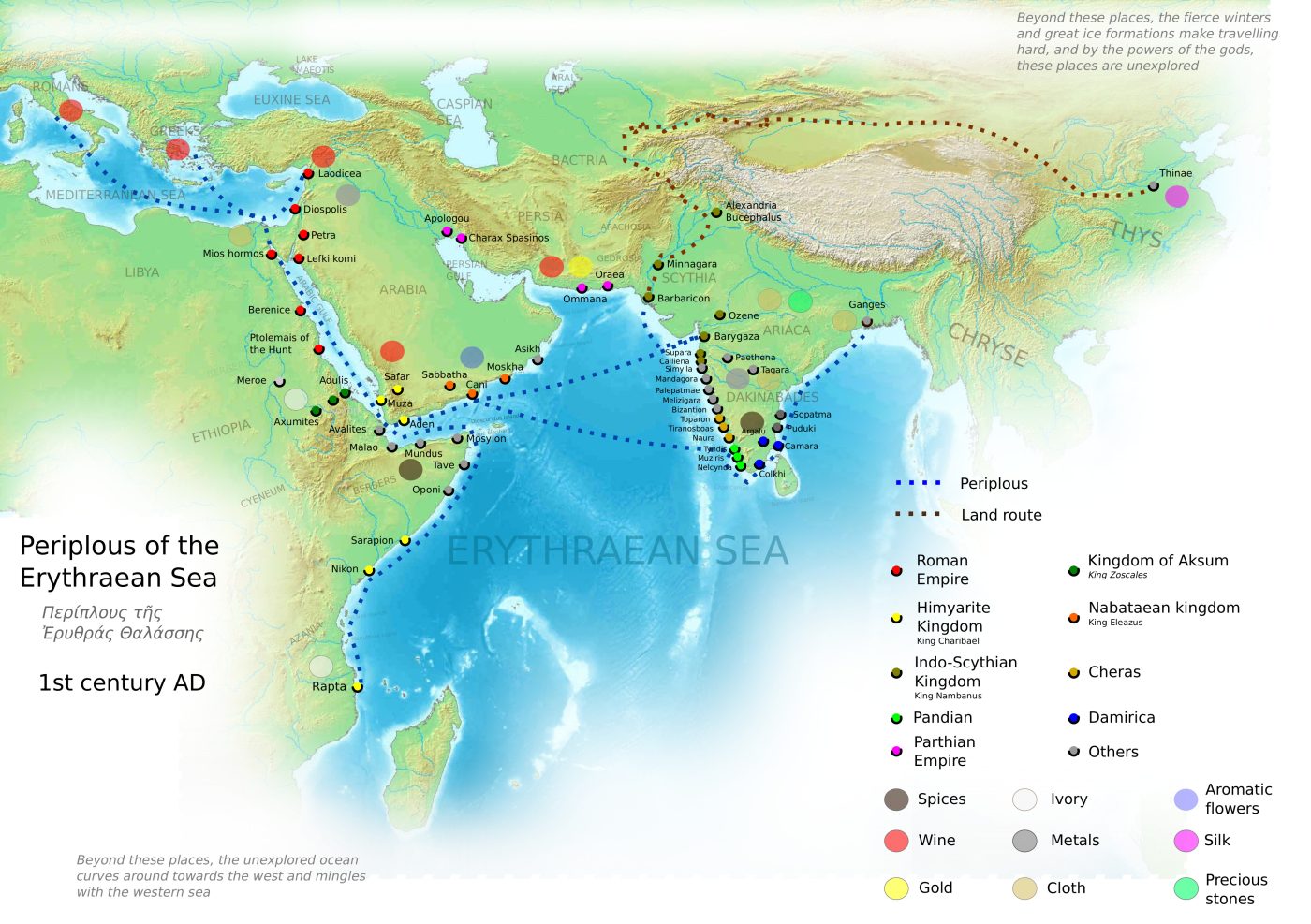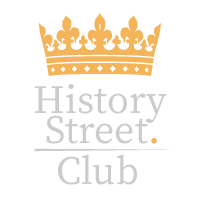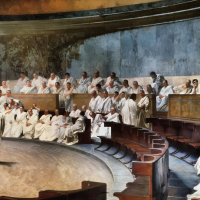The ancient world was a vast tapestry of cultures, empires, and trade routes. Among the most fascinating and significant of these routes was the Roman trade with India. This exchange not only shaped the economies of two great civilizations but also influenced their cultures, tastes, and aspirations. As we delve into this historical narrative, we’ll explore the perspectives of both the Romans and the Indians, revealing the intricacies of a trade relationship that spanned thousands of miles and countless generations.
Roman Perspective: Access to Luxury Goods and Spices
From the bustling markets of Rome to the grand banquets of the elite, the influence of Indian trade was unmistakable. The Romans had an insatiable appetite for luxury, and India, with its vast resources and exotic products, was the perfect supplier.
Silks, precious stones, and above all, spices, were the primary commodities that the Romans sought. Black pepper, often referred to as “black gold,” was particularly prized. These spices not only added flavor to Roman dishes but also held medicinal properties, making them invaluable. The advantages of this trade were clear: it elevated the Roman lifestyle, introducing a level of opulence previously unmatched.
However, the challenges were equally daunting. The journey to India was perilous, with ships having to navigate treacherous waters and face unpredictable weather conditions. Moreover, the cost of these goods was exorbitant. But such was the allure of Indian products that the Romans willingly paid with gold, leading to a significant outflow of the precious metal from the Roman Empire.

A Greco-Roman periplus that describes navigation and trading opportunities from Hellenistic ports along the coast of the Red Sea, and others along Horn of Africa, the Persian Gulf, Arabian Sea and the Indian Ocean. – Image: George Tsiagalakis / CC-BY-SA-4 licence
Indian Perspective: A Distant but Wealthy Trading Partner
For ancient India, the Roman Empire represented a distant but incredibly affluent trading partner. The subcontinent, with its diverse ecosystems, was a treasure trove of goods that the western world craved. The trade with Rome brought immense wealth to Indian merchants and kingdoms.
The advantages for India were manifold. The gold that flowed into the subcontinent enriched its kingdoms, allowing for the construction of grand temples and cities. Moreover, the trade fostered a cultural exchange, with Indian art and philosophy finding an audience in the Roman world.
Yet, challenges persisted. The vast distance between the two civilizations meant that direct communication was limited. This often led to reliance on middlemen, which could distort prices and reduce profits. Furthermore, the political instability in the Roman Empire, especially during its later years, posed risks to the continuity of trade.
In Conclusion
The Roman trade with India was more than just an economic exchange; it was a confluence of two great civilizations, each enriching the other. From the Roman hunger for luxury and spices to India’s view of Rome as a lucrative trading partner, this relationship was multifaceted and deeply influential.
The Enigmatic Voyage of the Roman Senator to India
In the bustling heart of ancient Rome, tales of distant lands and their exotic treasures often captured the imagination of its citizens. Among these tales was the audacious journey of a Roman senator who, driven by curiosity and the allure of the East, embarked on a voyage to India. This story, rooted in historical accounts, offers a glimpse into the intricate tapestry of Roman-Indian trade relations.
The Senator’s Quest
The senator, whose name has been lost to history, was not content with merely hearing about India’s riches; he yearned to witness them firsthand. Setting aside his senatorial duties, he boarded a ship from Egypt’s Red Sea port, destined for the western coast of India.
His journey was fraught with challenges. Monsoon winds, unfamiliar seas, and the vast expanse of the Indian Ocean tested the resolve of the crew. Yet, the promise of India’s treasures – the fragrant spices, shimmering silks, and gleaming gemstones – spurred them on.
A Warm Reception in India
Upon reaching India, the senator was greeted with warmth and curiosity. The Indians, always keen traders, recognized the significance of a Roman senator’s visit. They showcased their finest goods, from Malabar black pepper to the intricately woven textiles of the Indus Valley.
The senator was particularly taken by the Indian practice of yoga and meditation. He spent days with Indian sages, learning about their philosophies and way of life. This cultural exchange, while not a primary objective of his journey, left a profound impact on him.
Return to Rome
When the senator returned to Rome, he brought back more than just goods. He regaled the Roman elite with tales of his adventures, the grandeur of Indian cities, and the depth of its culture. His journey, while personal, paved the way for increased trade and cultural exchanges between the two great civilizations.
The Quest for the Precious Pepper: Rome’s Expensive Love Affair with India
In the annals of ancient trade, few tales are as intriguing as Rome’s insatiable appetite for Indian black pepper. This spice, often more valuable than gold, became the centerpiece of a trade story that spanned continents and shaped empires.
The Peppered Tables of Rome
It was during the reign of Emperor Augustus that Rome’s fascination with black pepper reached its zenith. The elite of Rome, always in pursuit of luxury, found in pepper a symbol of opulence. It wasn’t just a flavoring agent; it was a status symbol. Banquets weren’t considered complete without dishes sprinkled with this exotic spice.

The Perilous Journey East
To satiate this demand, Roman merchants embarked on perilous journeys to India. They set sail from the ports of Egypt, crossing the Arabian Sea, guided by the monsoon winds. The primary destination was the Malabar Coast, a region in present-day Kerala, renowned for its pepper vines.
The Price of Pepper
But this spice came at a steep price. Historical records, including those by Pliny the Elder, lament the vast amounts of gold that flowed from Roman coffers into India. Pliny estimated that Rome sent 50 million sesterces annually to India, primarily for spices, especially pepper.
The Legacy of the Pepper Trade
While pepper was the star attraction, the Roman-Indian trade wasn’t limited to it. India offered gems, silks, and other spices, while Rome exported wine, glassware, and gold. This exchange enriched both civilizations, fostering a bond that would last centuries.
1. How did the ancient maritime routes facilitate the Roman-Indian trade?
The ancient maritime routes, particularly the Red Sea route, played a pivotal role in the Roman-Indian trade. Ships would set sail from the Roman-controlled ports in Egypt, navigate through the Red Sea, and then cross the Arabian Sea to reach the western coast of India. The monsoon winds were crucial, as they dictated the timing and direction of voyages. The understanding of these winds allowed merchants to make round trips, ensuring a steady flow of goods between the two regions.
2. What role did middlemen play in the Roman-Indian trade?
Middlemen, often traders from regions like Arabia and Persia, played a significant role in the Roman-Indian trade. They acted as intermediaries, facilitating transactions and ensuring the smooth transfer of goods. While they were essential in bridging the cultural and linguistic gaps, their involvement also meant that goods became more expensive by the time they reached Roman markets due to added margins.
3. Were there any other Indian products, apart from pepper, that were highly sought after in Rome?
Absolutely! While pepper was a star attraction, several other Indian products were in high demand. These included precious gemstones like diamonds from the Golconda region, fine muslin cloth, indigo for dyeing, and aromatic substances like sandalwood and frankincense.
4. How did the Roman-Indian trade influence the cultural exchanges between the two civilizations?
The trade between Rome and India wasn’t just about goods; it was also a conduit for cultural exchange. Indian philosophies, art, and religious ideas found their way to Rome, while Roman architectural and administrative practices influenced Indian city-states. This mutual exchange enriched both civilizations, fostering a deeper understanding and appreciation of each other’s cultures.
5. Did the decline of the Roman Empire impact the trade relations with India?
The decline of the Roman Empire did have repercussions on its trade with India. As the empire faced internal strife and economic challenges, the trade volume decreased. The shift of power to the Byzantine Empire in the east also meant that the focus of trade routes shifted. However, the legacy of the Roman-Indian trade lived on, influencing subsequent trade dynamics in the region.



